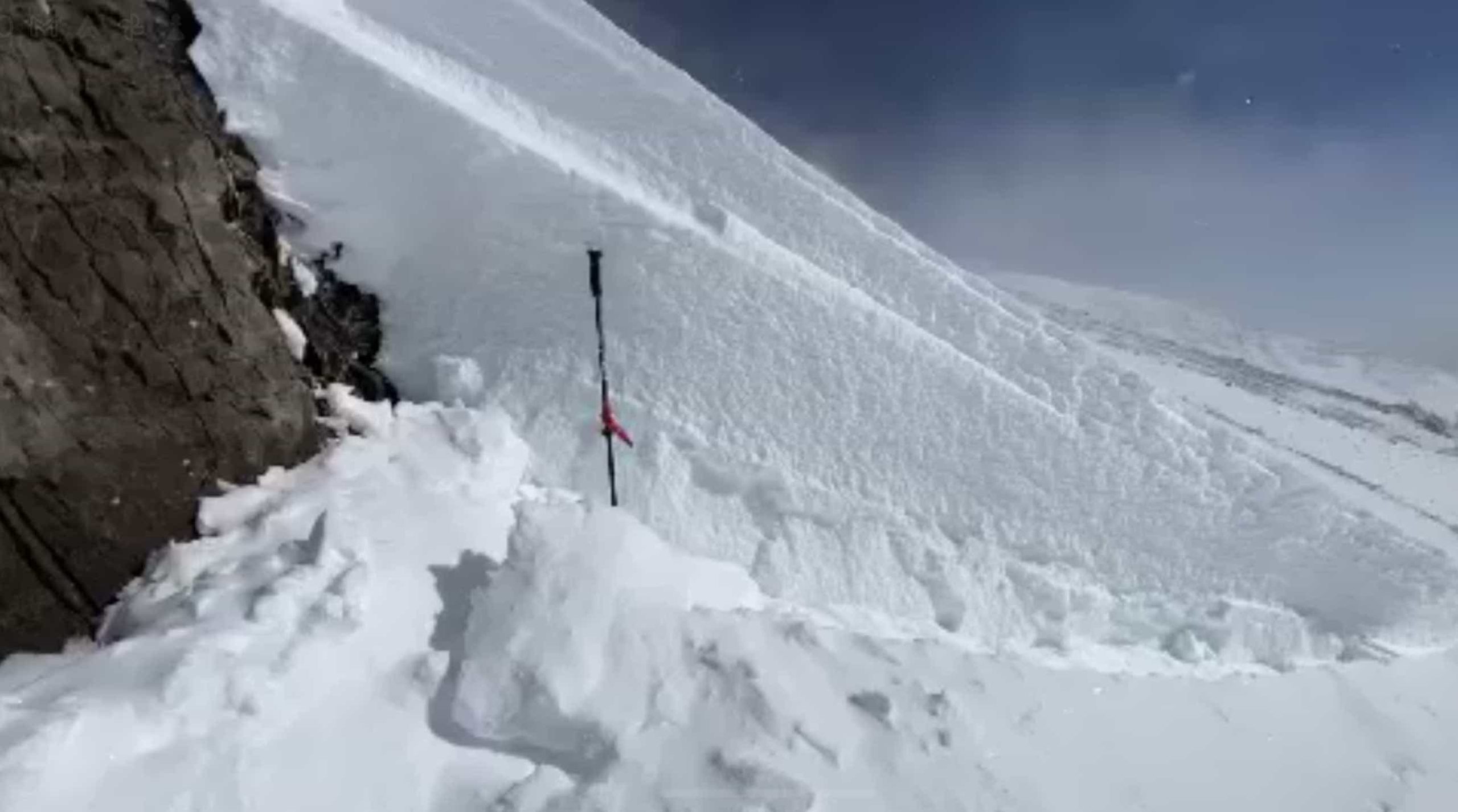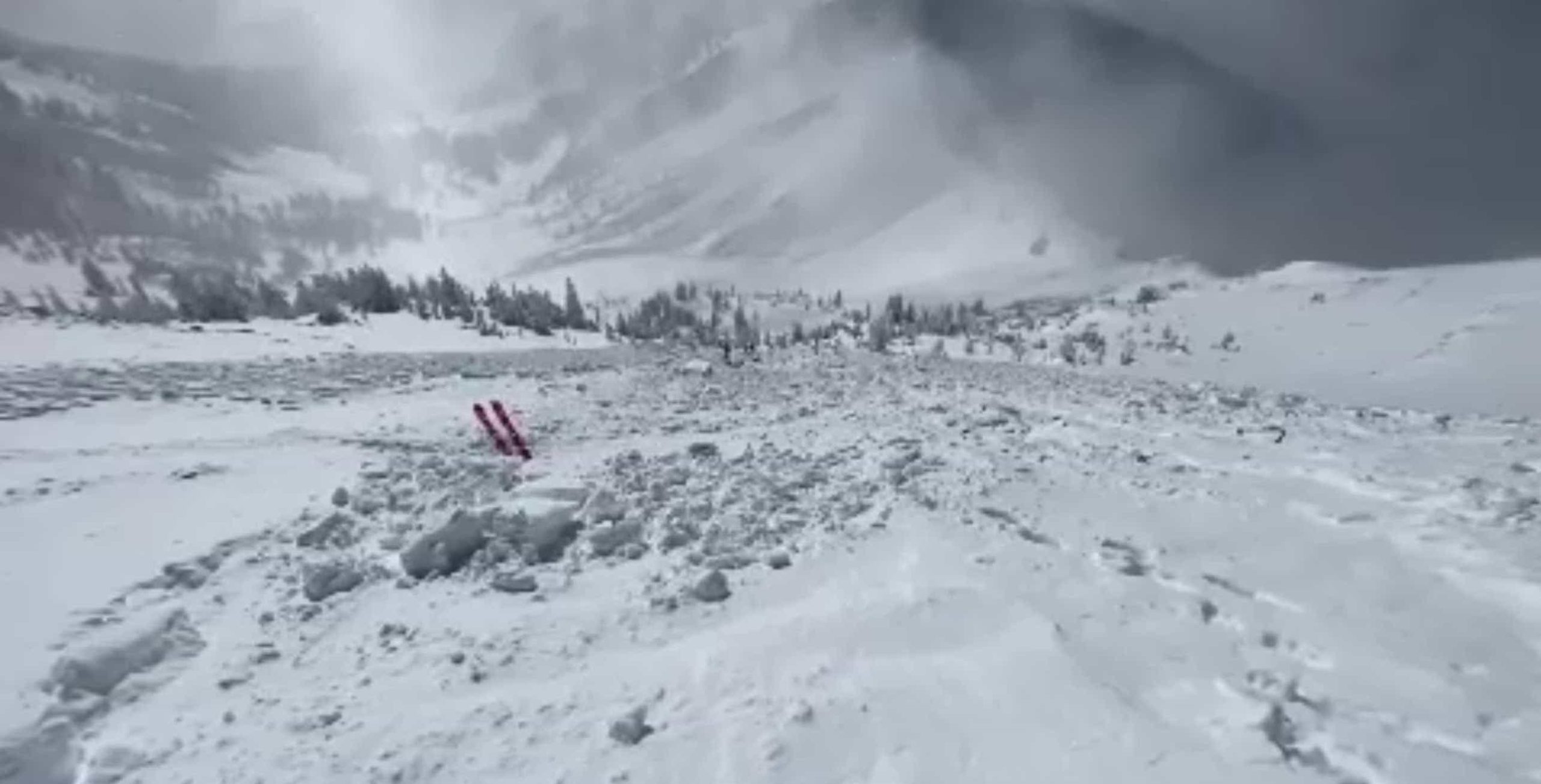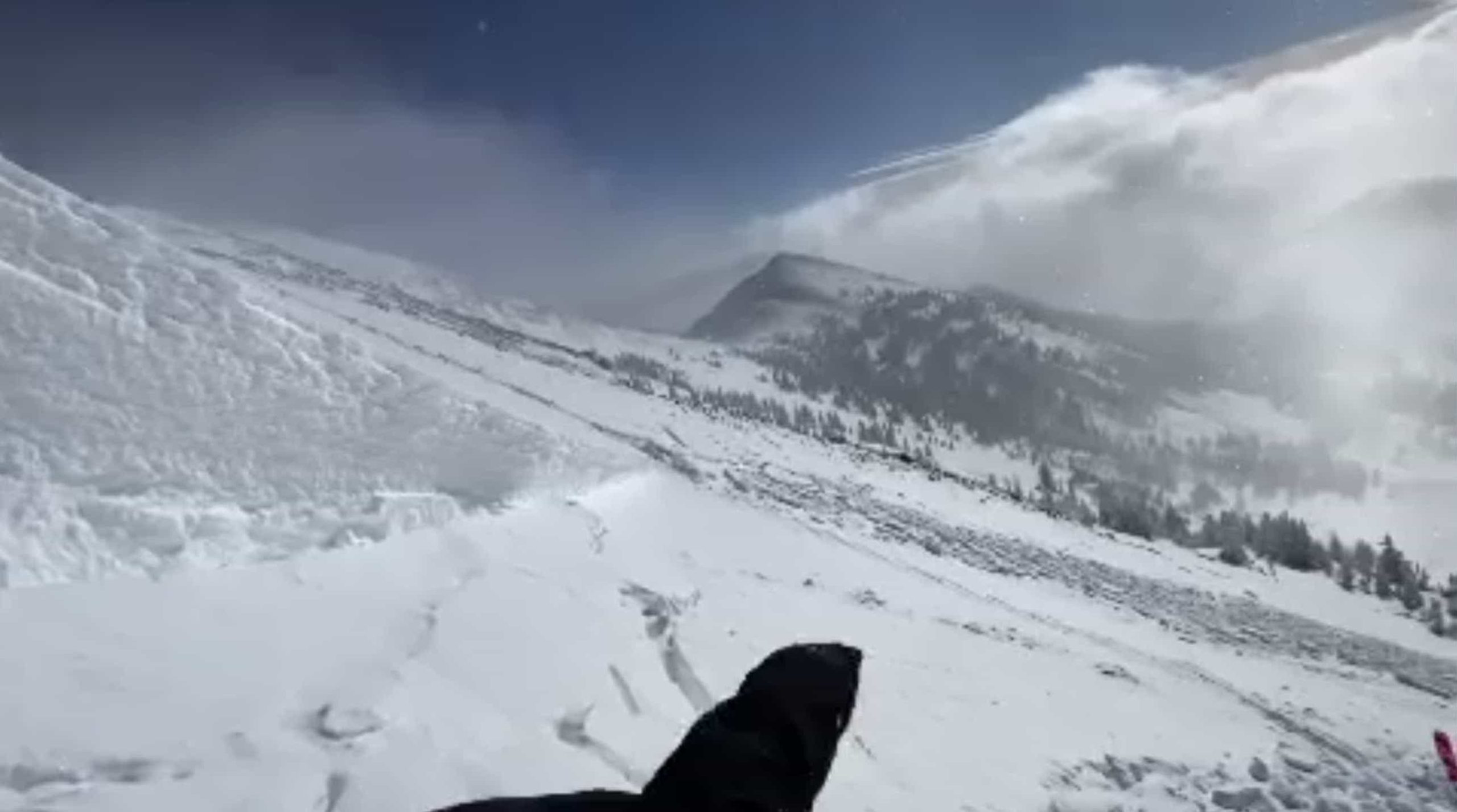
On Friday, December 16, two skiers entered the backcountry from the top of Teton Pass to ski a drainage several canyons to the north. At midday, while using climbing skins attached to their skis, they crossed a southeast-facing slope on Rendezvous Peak when they triggered a large avalanche. One skier was caught and carried about 1,500 feet down the hill.
He became buried up to his chest, keeping his head and arms above the snow. After his partner recovered him, he learned he had suffered a leg injury due to the avalanche.
“The party of two descended from the ridge to continue their route in a more wind-sheltered location. The avalanche occurred as the second skier traversed the slope in the skin track with the crack just a few feet upslope of the skier. The crown was reported to be 3-5 feet thick and reported to run approximately 500m (1,500 feet) over rocky areas. The skier was buried to the neck, with one arm free, against a tree and sustained non-life-threatening injuries. The first skier was not captured, and initiated a rescue.”
– Bridger Teton Avalanche Center report

They made an initial call to Teton County Dispatch, reporting the incident but saying they believed they could ski out independently. In that conversation, they unintentionally provided inaccurate information about their location, thinking they were in a different canyon. About an hour later, the skiers had another conversation with TCSAR and recognized their need for a rescue.
With clouds swirling and moving in, TCSAR initiated a helicopter response, with ground teams as a backup in case the weather deteriorated. The helicopter departed the TCSAR hangar with two SAR members and a pilot. The ship could land on the snow near the skiers, dropping off the two SAR members before lifting to fly around the scene. The SAR members arrived equipped with skis, warm clothing, shelter tools, and other 24-hour gear in case the helicopter could not return due to the weather. The volunteers provided initial patient care and helped the injured skier to the landing zone. Once clear, the heli returned, the patient was loaded, and both skiers and SAR members were flown back to the hangar in Jackson.
After the first nine months of 2022 proved to be the busiest ever for TCSAR, this was the team’s first active mission since October 9.
